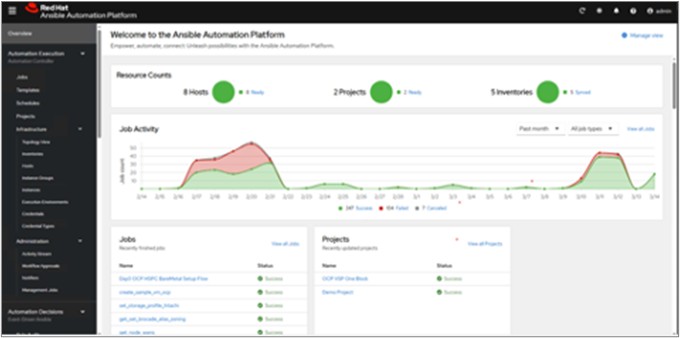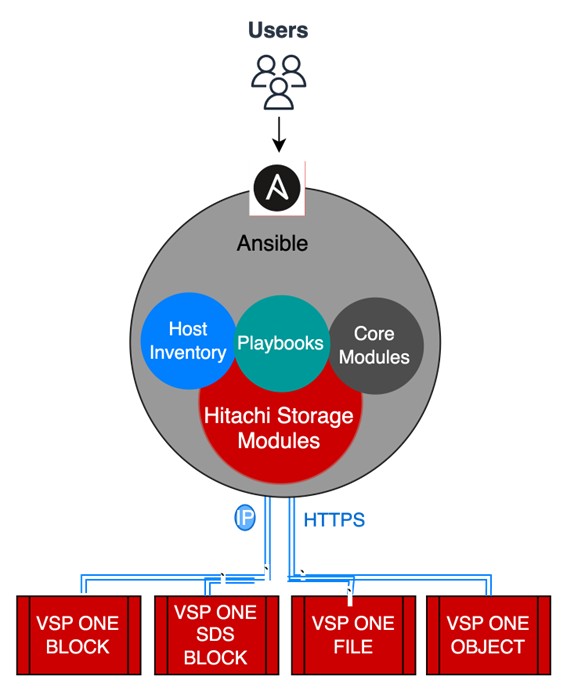Automating Hybrid Cloud Storage with IaC, Red Hat Ansible and VSP 360


At the heart of any enterprise data management strategy is the driving principle of infrastructure as code (IaC), the practice of defining, provisioning and managing infrastructure through code, and a foundational approach for enabling continuous delivery (CD).
Continuous delivery empowers IT infrastructure and operations (I&O) teams to collaborate seamlessly through a unified framework of tools and practices, enabling rapid and reliable deployment of software – and more specifically for our customers, their storage workloads – across hybrid environments. This approach not only accelerates delivery cycles but also ensures consistency, reduces manual errors and aligns infrastructure management with modern DevOps methodologies, even in complex, distributed architectures.
One of the biggest benefits of continuous delivery vs. other traditional delivery methodologies, is its emphasis on automation over manual processes – especially at enterprise scale. This shift drives greater efficiency and consistency in software delivery, empowering teams to stay ahead of evolving business demands.
Putting Automation at the Core of Data Management
Infrastructure as code is more than just a technical methodology. It's a strategic enabler for achieving the resilient, secure and scalable performance that continuous delivery demands. By treating infrastructure like application code – with versioning, testing and automated deployment – organizations can confidently manage change while improving auditability and governance. This is especially critical in hybrid cloud environments, where the complexity of integrating siloed data resources calls for advanced automation, policy-driven control and cost-efficient scaling. All while maintaining compliance and security posture across diverse platforms.
A prime example of meeting this need is our integration with Red Hat Ansible, an open-source automation platform widely used for configuration management, application deployment and task orchestration. As a leading tool for simplifying complex IT environments, Ansible is gaining rapid adoption for provisioning, configuring and deploying AI workloads. Its flexibility and scalability make it an ideal fit for modern infrastructure management, especially in environments demanding speed, consistency and repeatability.
At Hitachi, we’ve developed a comprehensive suite of Ansible modules for our VSP 360 unified management platform that supports seamless automation for block, file and object storage operations across our Hitachi Virtual Storage Platform One (VSP One) data storage portfolio.

With the latest integration – showcased this week at the Red Hat Summit 2025 – Ansible workflows are now deeply embedded in our new VSP 360 management platform. This allows users to directly execute automated storage tasks from the VSP 360 user interface, without requiring separate tools, scripts or intermediary gateways.
For data teams managing diverse workloads across increasingly distributed hybrid cloud storage environments, this can be a huge advantage, because it makes automation a native function of the VSP One platform. Which makes it an ideal solution for providing seamless, secure and scalable data operations.

Ensuring Success for Every Workload, Every Time
Using an IaC approach ensures that a standardized storage environment is created every time, for every workload, minimizing the chances of inconsistencies. As well as reducing risk from mistakes that often arise with manual configurations.
This also allows for faster deployment by automating infrastructure provisioning which speeds up the process, allowing businesses to roll out new features and updates more quickly. This is particularly important delivering certainty of outcomes across an organization on AI workloads, when supporting application performance can mean the difference between being competitive vs. anything but.
Moreover, this level of automation empowers IT leaders and teams to embrace a more creative role. As opposed to continually having to address laborious, manual and repetitive tasks. This transformation allows IT teams to evolve into a strategic ally for departmental users across the organization, actively helping shape the future of the business from the foundation up.
Streamline Storage with Broad Ansible Support
Hitachi Vantara now offers +100 Ansible modules and curated playbooks to streamline storage management and support hybrid workforces, including in-office and remote employees. And all while still allowing you to maintain flexibility and security at the core of your overall strategy.

Our Ansible modules – including our certified block collection (available on Ansible Galaxy) – support a wide range of tasks, including:
A Unified Approach to Automation with VSP 360
One key storage management requirement we see with customers leveraging an IaC methodology is providing a centralized platform for managing the entire enterprise data storage estate. That’s why Hitachi’s VSP 360 unified management platform was designed to consolidate management of VSP One Block, File, Object and SDS data storage systems. With features including fleet-wide management, observability, data protection and governance, together in a single interface.
For example, with the native inclusion of Ansible workflows, VSP 360 now enables even greater speed and agility via:
This combination allows I&O teams to navigate change and uncertainty within the business by pinpointing areas where cyber resilience is most crucial. That’s because, although disaster recovery and business continuity planning are often prioritized, talent-related risks can be just as harmful to the organization's seamless operation.
Infrastructure as code applied to your infrastructure management provides a transformative method that leverages code to automate the provisioning and management of IT infrastructure. This approach brings a host of advantages, such as automation, repeatability, version control, scalability, transparency and enhanced security.
This is especially important in the age of AI, where automation is not only your ally, but absolutely essential to your success. The importance of speed and scale cannot be understated here as application development requires continuous delivery at a rapidly increasing rate. But IT organizations must also deliver consistent, secure and uninterruptible user experiences, without error, as complexity grows.
VSP 360 enables you to simplify certainty in even the most complex use cases, such as:
Engineered for the future of storage infrastructure, VSP 360 redefines how automation is deployed at scale. It empowers storage administrators to move beyond repetitive tasks, enables DevOps engineers to orchestrate seamless full-stack automation, and equips architects to build adaptive, hybrid cloud frameworks. Paired with the power of Ansible, VSP 360 lays the groundwork for intelligent, self-optimizing infrastructure – designed not just to keep pace with innovation, but to drive it.
As businesses embrace hybrid cloud strategies, managing data services with precision and speed becomes critical. Hitachi Vantara’s VSP 360 platform now delivers these capabilities natively – empowering teams to automate infrastructure with Red Hat Ansible through a fully-integrated, unified experience.
To learn more about our hybrid cloud solutions with Red Hat, explore the available Ansible collections or connect with our team to schedule a hands-on demo to experience how VSP 360 can transform your infrastructure management through automation.
Read more

Sunitha Rao is General Manager, Hybrid Cloud & SDS Storage, at Hitachi Vantara, responsible for shaping future strategy, bridging on-premises and cloud infrastructure to enhance agility, cost efficiency and enterprise innovation.